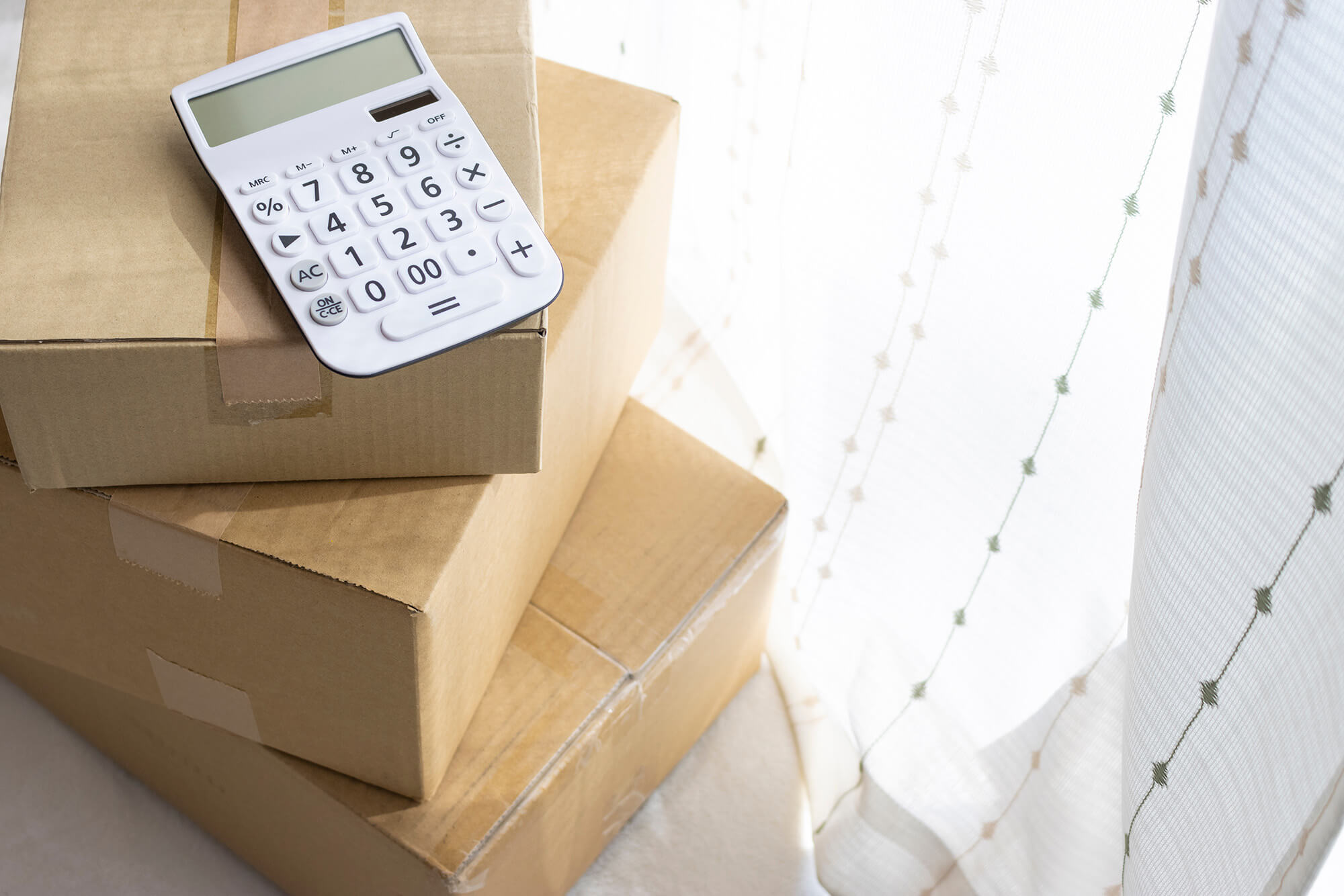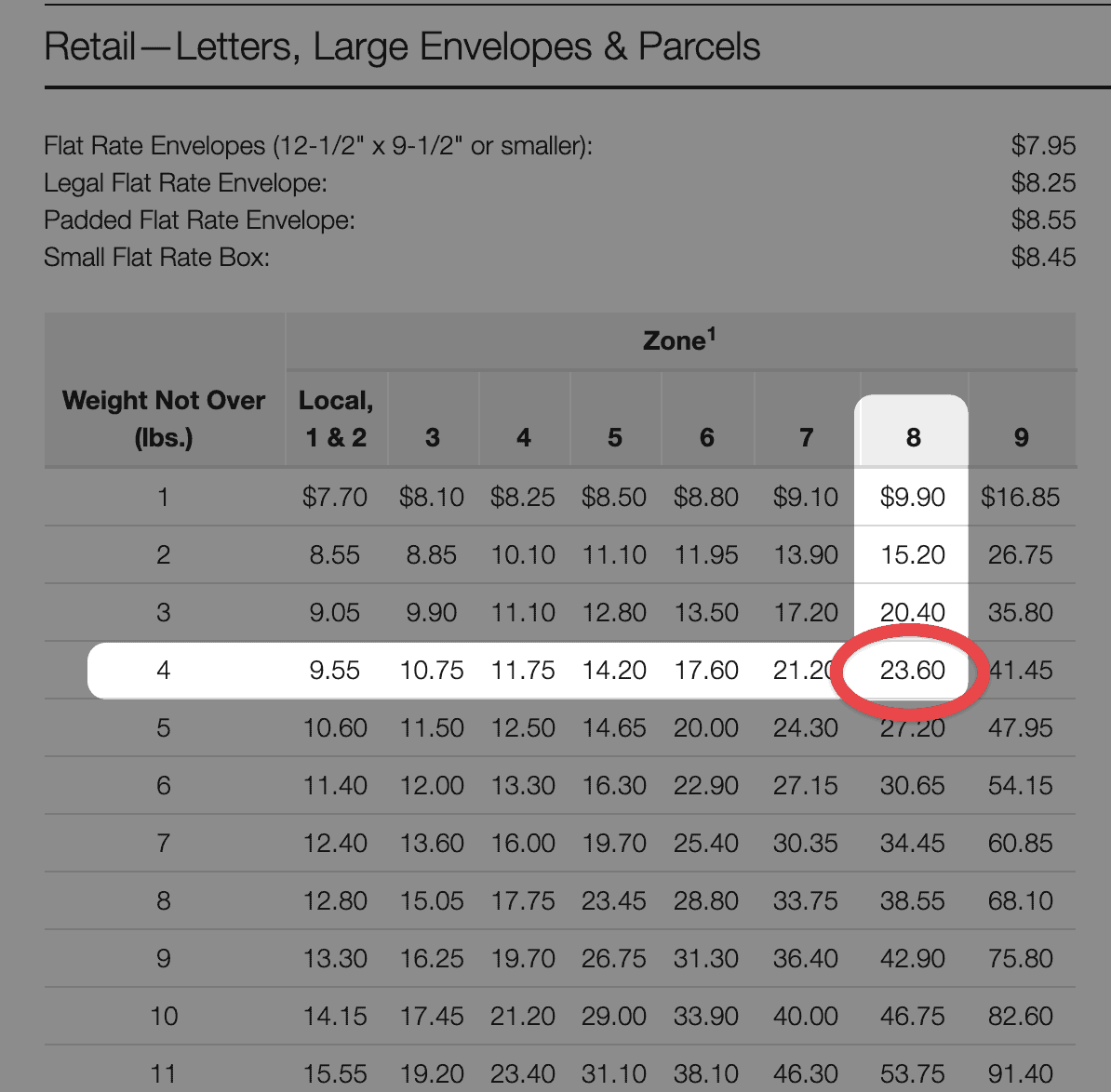
How to Calculate Shipping Costs
If you’re not a frequent shipper of packages: a) you’re not alone; and b) just the idea of shipping something might seem both intimidating and costly. There are a whole host of options from where to buy postage and shipping labels these days. You can buy shipping postage directly from the carriers like USPS, FedEx, UPS, and DHL, or you can use a multi-carrier shipping software like EasyShip where you can choose from all those carriers from one interface, at a discount.
While there are a number of different shipping companies and carriers out there, all of them (for the most part) use the same basic factors to calculate shipping costs. The better you understand these basic factors, the more you can start to forecast what the shipping cost of your package might be, so that you remove some of the guesswork and apprehension that comes with not knowing what you’re getting into.
Use a shipping calculator
Instead of calculating shipping costs by hand by looking up rates in a table, carriers have created shipping calculators that are accessible on their websites.
- OnlineShippingCalculator.com compare all major carriers on one screen (UPS, USPS, FedEx).
- USPS price calculator
- UPS price calculator
- FedEx price calculator
These calculators require you to know the addresses you are shipping to and from. You’ll also need to know the package dimensions and weight to get an accurate quote. However, you can always make estimates to get a ballpark price.
Once you are ready to buy your final postage, you’ll need to have the following info:
● From (Origin destination)
● To (End shipping destination)
● Package Dimensions (the length x width x height of the package)
● Package Weight (in ounces, grams, pounds, or kilograms)
Easy-to-use, super accessible (just a click away online!), and accurate to the penny, shipping calculators are definitely the way to go! They are way easier than having to calculate prices manually as we describe below.
How to calculate shipping costs manually
Most shipping companies provide online tools to figure out how to calculate your shipping costs manually. While there’s certainly nothing wrong with calculating your costs manually, the process is definitely more complicated and potentially confusing, especially if you’ve never done it before.
For example, if you were looking to ship a package manually through USPS, you would first have to determine what zone you were shipping ‘from’ and ‘to’. To do this, you would need to know the ZIP codes of both addresses, which should be easy enough to figure out.
However, you would then need to use the National Zone Charts Matrix to pair both ZIP codes with the corresponding zones to determine the distance between each zone. Then you would need to read several instructions that precede the charts, to understand how they actually work. Use of the matrix also costs money and the physical file can be challenging for a customer to use by hand. .
A more streamlined Domestic Zone Lookup Chart is offered to look up shipping zones. The USPS breaks up the United States into 9 shipping zones. Once you find your shipping zone, you can match that up with a rate table to find your shipping price. To use the zone lookup chart, you enter in the first 3-digits of the origin destination and then locate the first 3-digits of the end location, to determine what Zone your shipment falls under.
Finally, once you’ve determined your Zone (i.e. distance your package will travel), you’ll then head to the USPS Rates Page. Now that you know the Zone, as well as the weight of your package, you can carefully navigate through several pages of charts to determine what the ultimate cost is to ship your package. In the below example you can see that a Priority Mail parcel that is 4 pounds (row.heading) and shipping to Zone 8 (column heading) will cost $23.60 to ship.

There’s nothing wrong with doing things the manual way, however once you compare the inefficiency and risk of errors of the above process with the ease of an online shipping calculator, you’ll likely never want to calculate manually again!
The Basics of Calculating Shipping Costs
Whether you’re new to shipping or not, you probably understand that in general, the larger in size and heavier your package is, the more it will cost to ship it. This is true in most cases, but understanding why that’s true and the specific factors that go into the equation that determines your shipping cost, will help you be more efficient when you’re planning to ship a package, which ultimately can (and will) save you money.
Let’s look at a few of the key shipping cost factors below:
Shipment size is how physically large or small your package is. As mentioned earlier, shipping a larger package like a guitar will likely cost more to ship than say a pair of sunglasses or a book.
The reality of why shipment size matters is that the larger a package is, the more space it will take upon any given shipping vehicle, whether that be a truck, train, plane, boat, etc. Since there is only a finite space on each shipping vehicle, you pay for taking up more of that space. Your cost also includes tangible things like the driver’s wages, gas, wear & tear on the vehicle, profit margins for the company, and a slew of other predetermined inputs.
Shipment weight is another factor that goes into determining your shipment cost. As you can imagine, some smaller packages might be very heavy (like dumbbells) and some larger packages might be pretty light (like throw pillows for a couch).
By including shipment weight into the equation, carriers account for the added energy required to get your heavier package to its destination. The amount of energy refers to things like added weight in the shipping vehicle, which requires more gas to haul and causes more wear and tear on shocks, breaks, etc., as well as physical energy and additional equipment it takes drivers to move your heavier package, such as dollies, carts, pallet jacks, and more.
Shipping distance一 the total miles traveled to get your package from point A to point B 一 is another key component of the shipping cost equation. Understandably, shipping a package within your own city is less expensive than sending a package from the East to West coast.
Longer distance shipments cost more due to the additional costs the shipping company incurs such as more gas, mileage on their vehicle, the hourly wage for the driver, different types of vehicles (i.e. larger long-haul freights), and more. The price to ship your package also goes up when you start to cross international borders, which we’ll get into later.
Delivery speed is the final piece of the puzzle when it comes to calculating your shipping cost. This doesn’t refer to the speed on the speedometer of the driver’s vehicle, it refers to the expected time it will take for your package to be delivered. The faster you want something to be delivered, the more you’re likely to pay.
Each company has its own terminology, but typically you can expect a standardized hierarchy of delivery speed options that provide ranges (in the number of days) it will take for your package to arrive at its destination, such as Ground Delivery (5-8 days), Priority Delivery (3-5 days), Express Delivery (1-3 days) and Overnight Delivery, which arrives the day after you ship it.
The combination of all of these different shipping components 一 size, weight, distance, and speed 一 form the general equation that will be used to calculate your shipping costs. Now that you grasp the fundamentals, you can start to apply your newfound knowledge.
Common Shipping Mistakes
Now that you have a better understanding of how to calculate the shipping cost for your package, there are a few common mistakes that you’ll want to avoid (and be aware of) that can add unnecessary dollars to your bottom line.
First off, make sure that you use an appropriately sized box relative to the size of your package. Remember, a lot of the cost is based on the volume (LxWxH) of the package. Keep those box measurements as close to the actual size of the item you’re shipping, with enough room to put in sufficient protective cushioning, of course.
Next, you can avoid incurring residential pickup charges (i.e. having a scheduled pick up from your home), by leaving your package to be picked up at a shipping carrier store location. You can also drop your package into designated receiving boxes from companies like FedEx, UPS, and USPS that are located throughout most neighborhoods. Just don’t drop
Finally, just remember that the shipping cost you calculate with a carrier is usually not the only cost you’ll incur: packing tape, exterior box, foam or packing peanuts, and anything else you may need to wrap your package efficiently and securely can add unforeseen expenses!
With the above guidelines, know-how, and watch-outs, you should be ready to shape up and ship out!